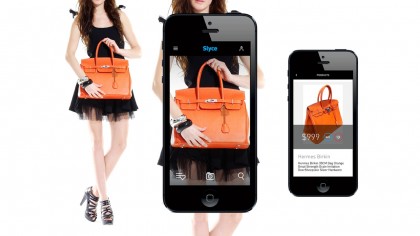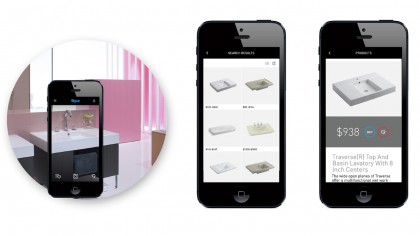Why contextual awareness is about to change the way you use tech
Technology is about to make your life even easier

So what's the future of contextualised visual search? "Slyce believes the future of contextual visual search is allowing a user to snap a photo of any item and derive all useful data out of that specific item, from cost, availability, comparables, related items, coupons, product demonstrations," says Elfenbein.
Contextual awareness is about personalisation
The age of big data means that marketeers now have access to a huge range of customer information, but they're not using it. "Until now, personalisation has usually involved using a combination of known profile information and historical data," says John Fleming, Director of Marketing, EMEA & Australia at Webtrends, which works with the companies like Lloyds Bank, Barclays, HSBC and Lastminute.com.
"What's been missing is the ability to combine these factors with real-time information such as 'in the moment' browsing data, the device a customer is using, their specific location and their stage in the purchase cycle. Bringing all of these factors together is defined as contextual personalisation."
This is about giving people what they want, when and where they want it, but it could also be the catalyst for innovations that marry the online world with the real world. Imagine if a shop knew what you wanted before you even entered – everything from your shopping habits, likes, dislikes and previous purchases.
As an example, Fleming describes how contextual awareness could help Jane while she shops for shoes online and in store. "Modern technology allows us to align what she has looked at previously [on the website] with her current online behaviour and external data such as geo-location and weather," he says. "You can then tailor her experience by providing pages that reflect the sunny weather where she is in Brighton and recommend summer sandals. Likewise if she was in Manchester, where it's raining, you could highlight some of the latest styles in wellies."

Fleming points out that even if Jane doesn't put anything in her basket, the retailer can use the historical and real-time data collated to send her an email within minutes around a deal based on the products she has looked at. The same could apply to cinemas and coffee shops.
"This is what contextual personalisation, combined with new technologies such as Apple's iBeacon, enables," says Fleming. "It uses consumers' known online behaviour data to drive offline sales."
Get daily insight, inspiration and deals in your inbox
Sign up for breaking news, reviews, opinion, top tech deals, and more.
Will contextually aware apps make things easier?
Life is already easier thanks to apps to some extent, with apps like Uber (connects you with a driver) and Venmo (make and share payments) simplifying everyday tasks. but we're in for more intricate apps that gather information on your context – and, therefore, calculate your needs.
Tell a future app that you're in the market for a new car, and it will schedule test drives for cars it knows you'll like – from your browsing history – at garages in your area at times it knows you can make. Some apps are already getting close to this; US-only app MyTime lets you instantly book appointments for a haircut/MOT/with a dentist without picking up the phone. In future, apps will be smart enough to know what you need (a year has passed since you last saw an optician) and when you should go (you're driving nearby and the optician just had a cancellation).
Google gets into contextual awareness
Although big data has a huge role to play in contextual awareness, for personal assistants like Google Now to be more aware of the user's interactions as well as geo-location requires much more accurate sensors in phones. Google's Project Tango concentrates on making devices much more aware of its surroundings.
"Project Tango strives to give mobile devices a human-like understanding of space and motion through advanced sensor fusion and computer vision, enabling new and enhanced types of user experiences – including 3D scanning, indoor navigation and immersive gaming", says Johnny Chung Lee, Technical Program Lead of Google's ATAP (Advanced Technology and Projects) group, one of the technology partners in Project Tango.
Sensor chip's dynamic range and 3D camera modules that measure depth ever more accurately are now in the lab, but the Tango tech – and contextual awareness – could hit the mainstream sooner than anyone thought.
- Thinking of buying a smart watch? You might want to take a look at the Moto 360
Jamie is a freelance tech, travel and space journalist based in the UK. He’s been writing regularly for Techradar since it was launched in 2008 and also writes regularly for Forbes, The Telegraph, the South China Morning Post, Sky & Telescope and the Sky At Night magazine as well as other Future titles T3, Digital Camera World, All About Space and Space.com. He also edits two of his own websites, TravGear.com and WhenIsTheNextEclipse.com that reflect his obsession with travel gear and solar eclipse travel. He is the author of A Stargazing Program For Beginners (Springer, 2015),
